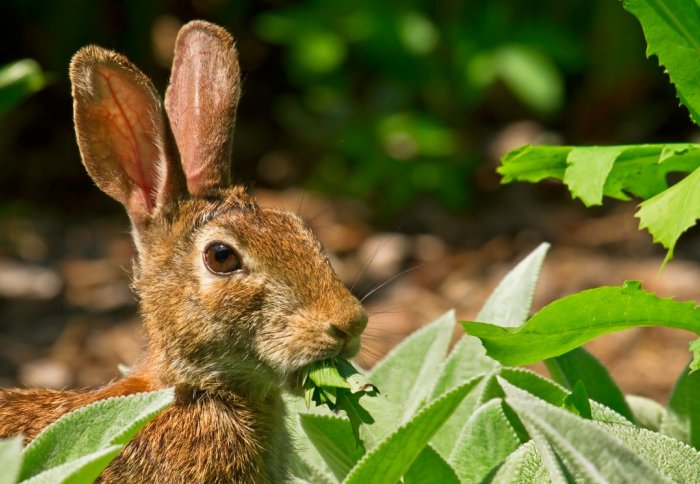

Introducing rabbits, deer and kangaroos to grasslands can offset nitrogen pollution and help reduce biodiversity loss, according to new research.
Nitrogen pollution from fertilisers and burning fossil fuels has become a growing environmental challenge, with the amount of nitrogen moving through ecosystems doubling over the past 50 years.
Nitrogen is a nutrient that increases growth, and while that might be desirable for crops, in a natural system this means that many species lose out. The growth of some plants reduces light levels for others and this prevents them from flourishing, driving biodiversity loss. Theories suggest that increasing the number of herbivores in an area, so that they can eat some of this growth, should increase light levels and promote biodiversity.
To test this, researchers at 40 test sites across the world conducted the same very simple experiment. They created 5 metre by 5 metre grassland plots with varying conditions. Some plots had nitrogen fertiliser added and others did not. In some of the plots, the researchers allowed access to natural populations of herbivores such as rabbits and kangaroos. In others, they built fences to keep out the herbivores.
Information was collected before any nutrient and fencing treatment was applied. Treatments were applied annually, and measurements were taken over the next three years.
Our new study suggests that the relatively simple measure of introducing herbivores to certain areas could make a difference. We hope that ultimately this strategy could be widely adopted as part of conservation efforts to safeguard biodiversity
– Professor Mick Crawley
Department of Life Sciences
The research, published in the journal Nature, showed that herbivores could help to reduce biodiversity loss but the impact of introducing them varied, depending on the climate and the number and type of animals present. Herbivores that had the greatest impacts were hoofed mammals such as cattle, marsupials such as kangaroos, and rabbits. Herbivore impacts were greatest in sites with a cool dry seasonal climate, or warm and constant temperatures, suggesting that the climate plays an important role.
Building on these findings, the researchers are keen to do further work to explore how to maximise the impact that herbivores can have.
The research confirmed that adding nitrogen fertilisers increased plant biomass, which in turn reduced light. Where there were no herbivores present, this caused substantial loss of plant biodiversity over a period of three years.
Professor Mick Crawley from the Department of Life Sciences at Imperial College London led two test sites using rabbits at the College’s Silwood Park campus. The design of the new global study was inspired by earlier, similar projects at Silwood Park.
Professor Crawley said: “Understanding how to preserve biodiversity in the face of global change is really important. The energy and food needs of the world’s growing human population are creating a huge strain on our natural ecosystems. The future diversity of these ecosystems is under threat”.
“Our new study suggests that the relatively simple measure of introducing herbivores to certain areas could make a difference. We hope that ultimately this strategy could be widely adopted as part of conservation efforts to safeguard biodiversity,” he added.
Since the days of Darwin, ecologists have carried out numerous experiments looking at how interactions between herbivores and nutrients affect biodiversity. However, researchers have been unable to reach firm overall conclusions from this work because they have used different methodologies.
The strength of the new global study is that it replicates the same experiment across six different continents, providing data on different environments that is comparable. The study was conducted by The Nutrient Network (NutNet), a grassroots ecological network of which Imperial College London is a founding member.
Reference: Borer, E et al. ‘Herbivores and nutrients control grassland plant diversity via light limitation’. Nature, 9 March 2014.
Article text (excluding photos or graphics) available under an Attribution-NonCommercial-ShareAlike Creative Commons license.
Photos and graphics subject to third party copyright used with permission or © Imperial College London.
Reporter
Gail Wilson
Communications and Public Affairs

Contact details
Email: press.office@imperial.ac.uk
Show all stories by this author
Leave a comment
Your comment may be published, displaying your name as you provide it, unless you request otherwise. Your contact details will never be published.




Comments
Comments are loading...